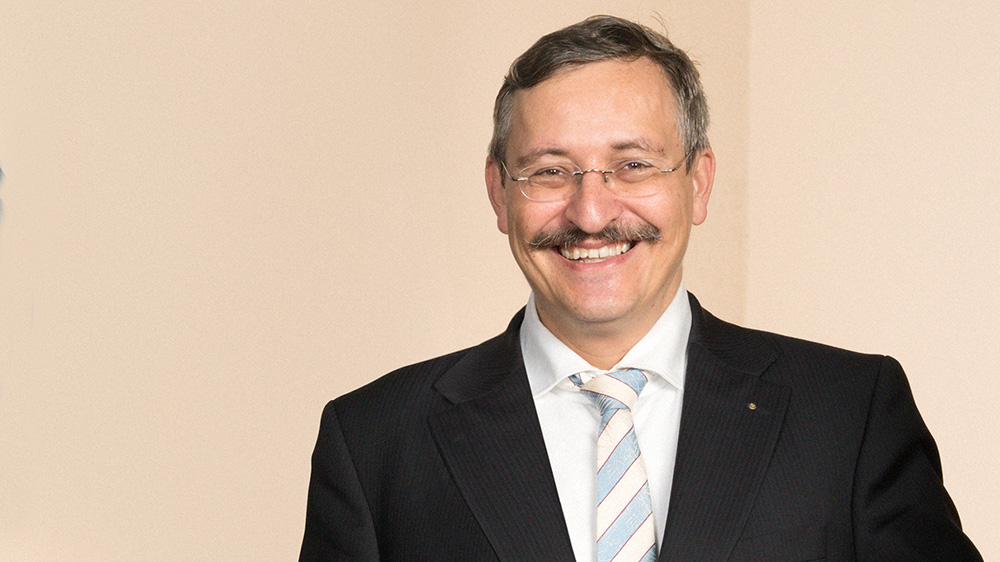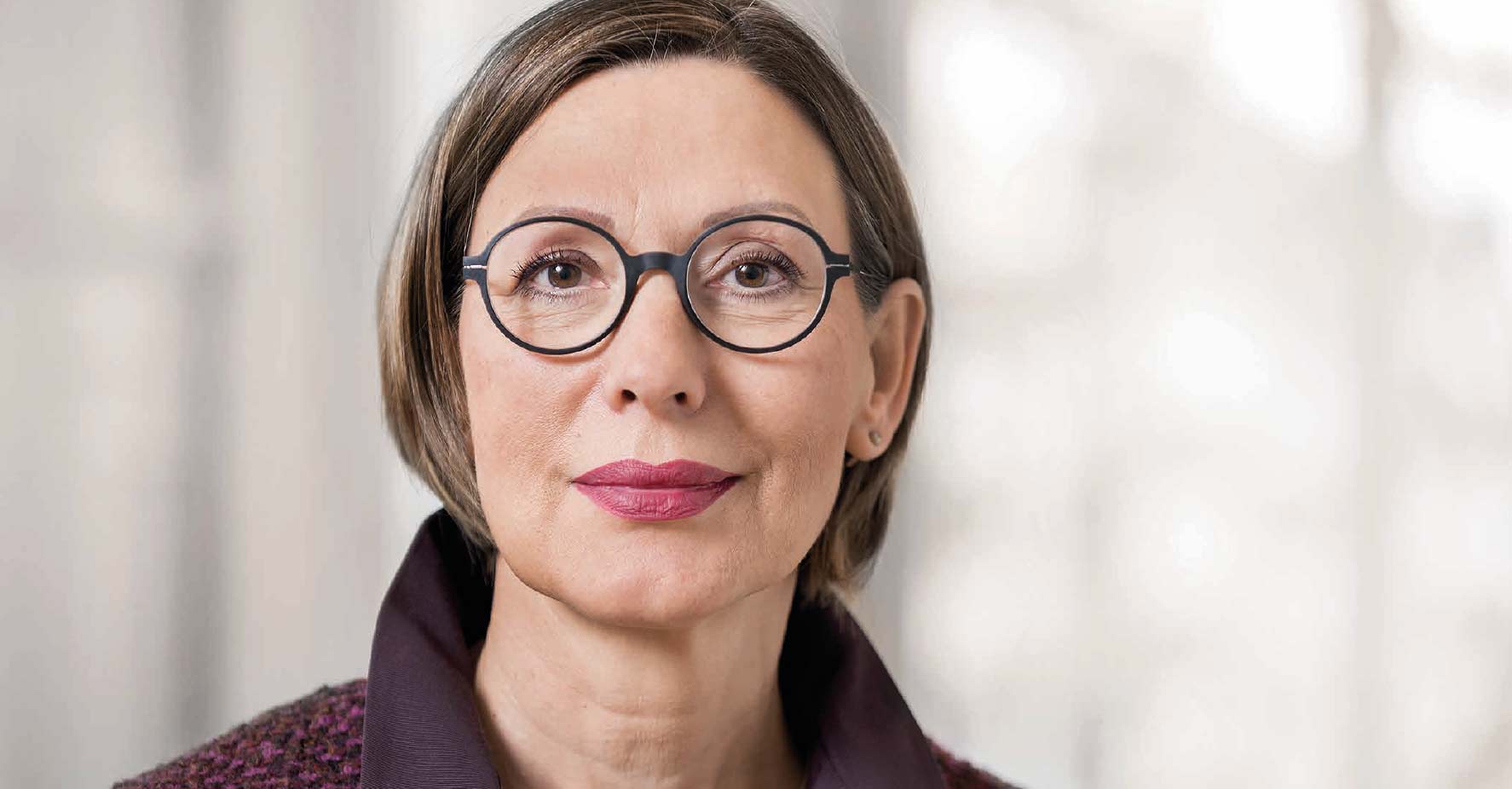“Like a good compass”
Michael Hengartner, why does UZH need new strategic principles?
Michael Hengartner: Our current strategic goals are almost seven years old, and the time period they cover is up to 2020. So it’s really time to renew them. UZH has over 25,000 students from all over the world, as well as around 9,000 staff with very diverse backgrounds working in a huge variety of roles and disciplines. Our strength lies in our diversity. The more diverse the UZH family is though, the more important it is to have core principles on which we all agree. Agreeing on the fundamentals makes it easier for us all to work together at UZH. It’s important that everyone knows what our common goals are.
Gabriele Siegert, aren’t strategic principles just fancy words? Forgotten as soon as they’ve been written down?
Gabriele Siegert: No, not at all. Strategic principles are as indispensable as a ship’s compass at sea. UZH is obliged, within the conditions of its legal framework, to determine its own fate. In order to be able to navigate the future, we need suitable instruments on board. We cannot afford to sail uncharted waters without a navigation system.
What lessons can be drawn from the execution of the previous plan, the Strategic Goals 2020?
Hengartner: On the whole the plan fulfilled its role as a navigation tool well. One weakness in the concept was that specific measures were assigned to each of the goals. Over the years these measures then had to be continually adapted and added to, meaning the document kept getting longer and more unwieldy.
Siegert: This has led us to keep the new strategic principles as streamlined as possible. For the planning of specific measures we have drawn up an additional document, the Priority Program of the Executive Board of the University.
What about the UZH Mission Statement that was brought in six and a half years ago at the same time as the Strategic Goals 2020?
Siegert: At first we considered expanding the mission statement so that it could be used as a strategic basis, but because it is very coherent in its current form and well established within UZH, we decided against this idea. So the UZH Mission Statement remains unchanged, and the new strategic principles complement it.
That means that in the future there will be not two but three documents guiding the development of UZH. What are the differences between them?
Hengartner: The mission statement sets out the main features of how UZH understands its role. The strategic principles are more about setting the direction for future developments, while the priority program of the Executive Board of the University lists the specific steps to be taken in the next four years – it corresponds precisely to the current term of office of the elected members of the Executive Board of the University.
Let’s get down to details: How successful has the university been in implementing the aims that it set itself six and a half years ago?
Siegert: Many of the aims have been achieved, for example expansion at the doctoral level, establishment of the Graduate Campus, implementation of a continuing education strategy and strengthening of the leadership structures. But there were also goals that we consciously abandoned because they no longer seemed useful to us.
For example?
Hengartner: For example the aim of supporting junior academics by increasing the proportion of assistant professorships to 25 percent of all professorships. The intention was good, but it raised the question of what should happen to all those assistant professors later, as there was no way we could offer all of them a permanent professorship.
What is the new strategy for the career paths of junior academics?
Siegert: The current draft suggests that we get out of the mindset of the classic full professorship being the be-all and end-all, and develop other rewarding and challenging career paths.
The section about research mentions the importance of diverse and equal research cultures. Does that mean it’s not necessary to define research priorities?
Siegert: No, we will continue to establish and support University Research Priority Programs. They will be selected according to a rigorous review process as before. Equal research cultures in this case means equal opportunities for all disciplines. The Executive Board of the University will not set subject-specific or topic-related parameters for the research priorities – the deciding factor in each case will be the quality of the project plans submitted.
The section about teaching and learning talks of open dialogue with regard to quality management. What does that mean in practice?
Siegert: Up to now we’ve been very good at analyzing the strengths and weaknesses of courses and study programs. But effective improvements only come about when we engage in dialogue with the relevant parties, and when they also have the opportunity to discuss and exchange best practices amongst themselves on a regular basis. The points of view of the vice deans of studies, the study program coordinators, the teaching staff and the students must be taken into account as a systematic part of the process.
One whole section of the strategic principles is dedicated to medical research. Why is that?
Hengartner: Researchers in medicine are, in particular if they are involved in clinical research, essentially dependent on the University’s four hospitals cooperating with each other. For that reason the organizational requirements for medical research and teaching are particularly complex. It’s a special case and warrants its own section in the strategy paper.
The One Health approach is also given a high profile. Why does UZH see this approach as important?
Siegert: It takes into account the systemic connections between humans, animals, the environment and health. UZH’s specific strengths are that it is a comprehensive university offering a wide range of subjects and also has outstanding human and veterinary medicine facilities. The One Health approach enables us to make the best use of those strengths.
What else does the draft paper focus on?
Hengartner: There is a focus on international networking, research collaboration with third parties, and UZH’s responsibilities toward society. Emphasis is also placed on fostering a culture of positive interpersonal relationships within UZH, including in relation to leadership and management. We recognize that equal opportunities, diversity and sustainability bring added value to university life.
Who was involved in drawing up the strategic principles?
Hengartner: It was clearly important to involve a broad range of stakeholders, as the purpose of the paper is to act as a cohesive guide for the whole UZH community. The Extended Executive Board of the University therefore took the initial lead and set up a working group including representatives from the faculties, the representative bodies and the Gender Equality Commission. In addition, the Executive Board of the University was represented by the Director of Finances and Human Resources Stefan Schnyder and Deputy President Gabriele Siegert, who chaired the working group.
Siegert: We were able to work very well together – I’m very grateful to all the members of the working group for their efforts thanks to which we made quick progress. Now I’m looking forward to hearing the results of the consultation.


